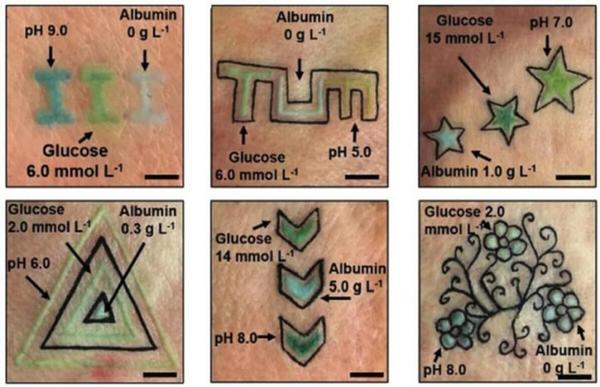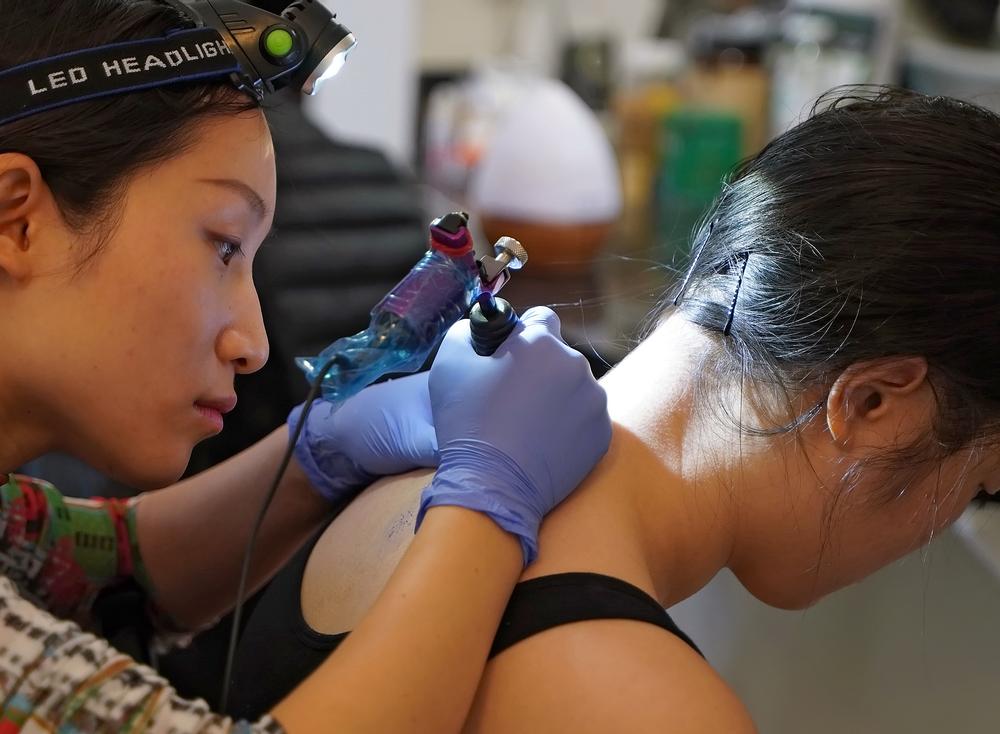With everyone now familiar with wearables, researchers at Technical University Munich (TUM), headed by Ali Yetisen, set up a project to envision how they may look in 20 or 30 years time. The 10-strong team has taken wearables to the next level, by using the skin as a diagnostic display to show real time changes in the body’s constitution.
The tattoo uses a dye which changes colour according to changes in the interstitial fluid, which is a surrogate medium for blood. To date, it works with three elements found in the blood: pH levels, glucose and albumin, a type of protein. This means the tattoo could alert a diabetic patient if they were having a blood sugar spike.
“If the glucose levels are high, the tattoo turns green, and if they are too low it becomes yellow,” explains Yetisen. “This could be an effective way of keeping track of health for people with specific health concerns.”
The next phase of research will look at electrolytes to show hydration and dehydration levels; this could be applied in the health and fitness industry, particularly for those taking part in endurance sports.
“Minerals such as sodium, potassium and magnesium are critical in monitoring the body’s hydration status and this could provide a real time measurement,” says Yetisen. “We could also look at lactate and glucose levels and the impact of fructose and caffeine.
“The third phase of our research will look at hormone levels – testosterone, adrenalin, cortisol, all of the stress biomarkers, which can identify fatigue and exhaustion. The opportunities are endless, it is a new concept which no one has really explored.”
Going forward
One of the challenges of the research was to find the exact viscosity of the dye to prevent diffusion of the tattoo. To do this, the team practised on pig skin, as this is similar to human skin. Long term they plan to develop bioluminescent sensors, which will make the skin glow, to replace the dyes.
It is too early to say whether or not this technology will be embraced by the medical community, as there needs to be more testing on its safety.
“We need to test the cytotoxicity and any reaction, but as the tattoos are based on conventional tattoos I don’t think they will be significantly different,” says Yetisan. “We have received a lot of interest from people who are doing biohacking and those in the quantified self movement.”
One other issue is around data protection, since the tattoos could be a very visual measure of a medication condition. One possible way of getting around this is by working in the non-visible infrared range and using a smartphone infrared camera mode to see the tattoo.
It will be interesting to see where this futuristic technology goes.























































